Pine Fencing Lumber
- September 19, 2023
- 0 comment
Pine fencing lumber is a versatile and cost-effective material commonly used in residential and commercial fence installations. It comes in various dimensions and can be easily cut and shaped to meet specific project requirements. Pine is relatively lightweight, making it easier to work with during installation. Contractors may recommend pressure-treated pine for clients seeking a longer-lasting fence that requires less maintenance. Proper post installation and sealing techniques are essential to ensure the longevity of pine fences.
Pine fencing lumber is available in a variety of sizes and styles. It can be used to create a variety of different types of fences, including privacy fences, picket fences, and post-and-rail fences. Pine fencing lumber can also be used to build gates and other outdoor structures.
One of the biggest benefits of pine fencing lumber is its affordability. Pine is one of the most affordable types of wood available, making it a great choice for budget-minded homeowners. Pine fencing lumber is also very durable and can withstand the elements for many years with proper care.

| Specifications | Description |
| Density | 500 kg/m³ |
| Moisture content | 12-15% |
| Hardness | Pine fencing lumber is a softwood, but it is still relatively hard and durable. It is harder than many other softwoods, such as spruce and fir. |
| Wood Type | Common pine species used for fencing include Eastern White Pine, Southern Yellow Pine, and Ponderosa Pine. The choice of species can affect the wood’s appearance, durability, and cost. |
| Treatment | You can choose between treated and untreated pine lumber. Pressure-treated pine is infused with preservatives to resist decay, insects, and moisture, making it more durable and long-lasting. Untreated pine requires more maintenance but may be preferred for its natural look. |
| Texture | Pine lumber can have different surface textures, such as smooth or rough-sawn. The texture can affect the appearance of the fence. Smooth lumber provides a clean and modern look, while rough-sawn lumber offers a more rustic appearance. |
| Tensile Strength | Tensile strength measures a material’s ability to withstand a pulling or stretching force. Pine has moderate tensile strength, making it suitable for fencing applications. However, it is not as strong as some hardwoods, so larger dimensions or additional supports may be necessary for taller or longer fence sections. |
| Durability | Pine is not as naturally durable as hardwoods, so if you want a longer-lasting fence, consider pressure-treated pine or explore options for protective coatings and sealants. |
| Local Availability | Pine fencing lumber is widely available in many regions, making it a convenient choice for local projects. However, the specific species and grades of pine may vary depending on your location. Check with local lumberyards and suppliers to determine the availability of suitable pine lumber for your fence. |
| Grain Pattern | Pine typically has a straight grain pattern, which can vary in appearance depending on the specific pine species. |
The Beauty of Natural Pine
The beauty of natural pine trees and the lumber they yield is multifaceted and enduring. Its warm color, distinctive grain patterns, charming imperfections, aging patina, and adaptability in design all contribute to its timeless allure. Whether used in a rustic cabin, a cozy home, or a piece of finely crafted furniture, pine’s beauty transcends trends and remains a testament to the enduring appeal of nature’s creations.
It exudes a rustic charm that blends seamlessly with various architectural styles, from traditional to contemporary. The natural beauty of pine lumber only improves with age, developing a lovely patina that adds character and sophistication to your fence.

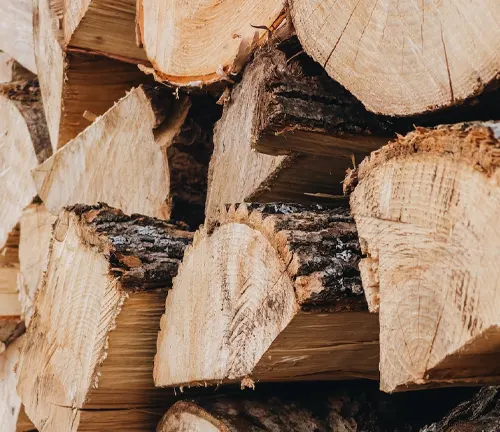
Cost-Effective Choice
One of the most significant advantages of using pine fencing lumber is its cost-effectiveness. Pine is a readily available and renewable resource, which makes it more affordable than some other wood species. This affordability extends to the installation process as well, as pine is relatively easy to work with, reducing labor costs.
Durability and Longevity
While pine is not as naturally durable as some hardwoods like cedar or redwood, it can still provide excellent longevity with proper maintenance. Applying a high-quality wood preservative or stain and regularly sealing the wood can protect it from the elements, preventing rot and decay. Pine fencing, when well-maintained, can serve you well for many years.
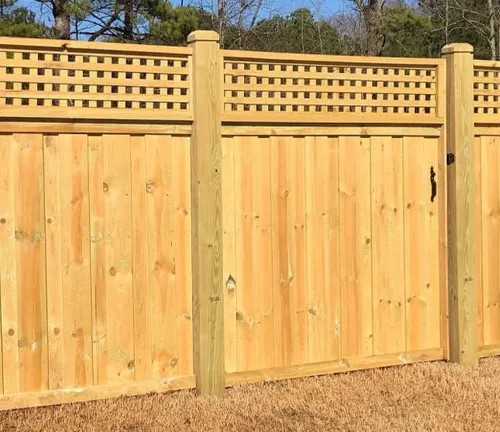
Easier Maintenance
Compared to some other fencing materials, pine is relatively low-maintenance. While it does require some attention to keep it in top condition, the maintenance tasks are straightforward. Regular cleaning to remove dirt and debris and periodic resealing or staining to protect against weathering are usually all that’s needed. This ease of maintenance means that your fence can continue looking great without requiring extensive efforts or expenses.
Eco-Friendly Choice
For environmentally conscious homeowners, pine fencing lumber is a responsible choice. Pine is a fast-growing tree species, which means it can be harvested sustainably. Additionally, when a pine fence reaches the end of its life, the wood can be recycled or repurposed, reducing its impact on landfills.
Historical Significance
Pine fencing lumber carries a sense of history and tradition with it. It has been used for centuries in construction and fencing, contributing to the rich architectural heritage of many regions. Choosing pine for your fence can connect you to this historical significance, creating a sense of continuity and timelessness in your property.
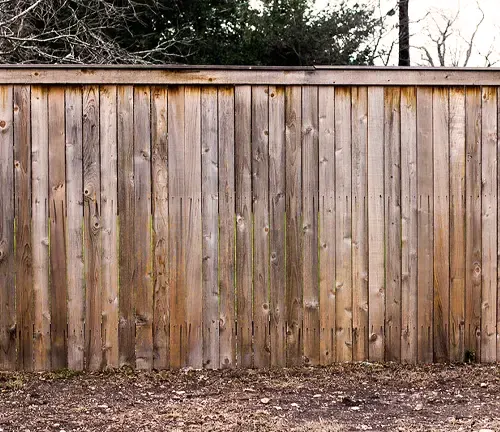
Local Availability
Pine is widely available in many regions, making it a convenient choice for those who prefer locally sourced materials. Choosing pine fencing lumber can also support local industries and economies. It’s often easier to find pine lumber that hasn’t traveled long distances, reducing its carbon footprint and contributing to a more sustainable building process.
An Investment in Curb Appeal
Lastly, pine fencing lumber can significantly enhance your property’s curb appeal. A well-designed and maintained pine fence not only increases your property’s value but also leaves a lasting impression on visitors and potential buyers. It can be a key feature that sets your home apart in a crowded real estate market.
Benefits
Pine fencing lumber offers a range of benefits, making it a popular choice for fencing projects. Its natural beauty, with warm tones and distinctive grain patterns, enhances the aesthetics of outdoor spaces while being cost-effective and easy to work with. Pine’s versatility allows for customization, and with proper maintenance, it can be made durable and long-lasting. Moreover, it’s a sustainable option, with responsible forestry practices ensuring a constant supply of pine wood. Its resistance to warping, local availability, historical significance, and low maintenance requirements further contribute to its appeal.
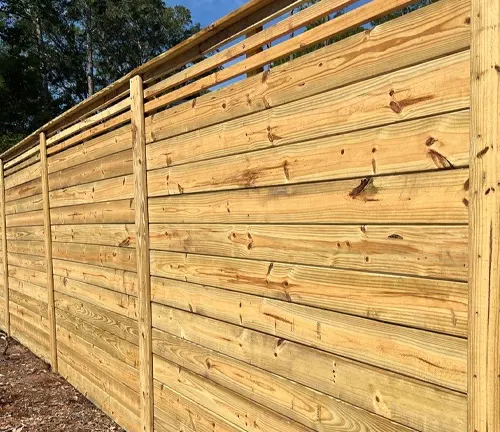
Pine’s warm and inviting nature creates a welcoming atmosphere, and a well-maintained pine fence can increase property value. In summary, pine fencing lumber combines aesthetics, affordability, versatility, and sustainability, making it a practical and enduring choice for fencing needs.
Common Uses
Pine fencing lumber finds common use in a variety of outdoor applications. One of its primary purposes is as a material for residential fences, including picket fences for decorative boundaries and privacy fences for seclusion. It’s also used extensively in garden fencing, creating enclosures for plants and flower beds. Beyond fencing, pine lumber is employed for constructing gates, pergolas, and trellises, adding architectural elements and enhancing outdoor aesthetics.
Additionally, it’s a popular choice for decking, where its affordability and versatility make it a suitable alternative to pricier hardwoods. In summary, pine fencing lumber is widely utilized for residential fences, garden structures, gates, and decking, offering durability and natural charm to outdoor spaces.
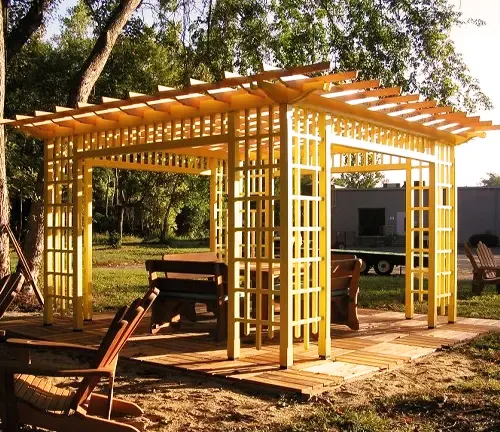
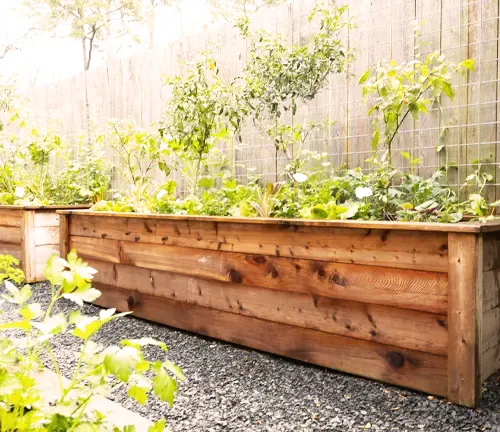
Frequently Asked Questions (FAQs)
- Is pine fencing lumber suitable for coastal areas with high humidity and salt exposure?
Pine can be used in coastal areas, but it requires special treatment and maintenance due to the increased risk of moisture and salt damage. Applying marine-grade sealants and regular upkeep can help prolong its lifespan in such environments. - Can I use reclaimed pine lumber for a sustainable fencing project?
Reclaimed pine lumber can be a sustainable choice for fencing, as it repurposes wood that would otherwise go to waste. However, it may require extra effort in terms of cleaning, sanding, and possibly treating to ensure its durability and longevity. - Are there any special considerations for staining or painting pine fencing lumber to achieve a specific color or finish?
Achieving a particular color or finish with pine may require additional steps, as pine can sometimes have variations in its grain and color. Preparing the wood surface properly, using primers, and choosing the right type of stain or paint are essential for achieving the desired result. - How does pine fencing lumber compare to cedar or redwood in terms of longevity and maintenance?
While pine is more affordable, cedar and redwood are naturally more resistant to decay and insects. Pine can still be long-lasting with proper maintenance, but it may require more frequent attention and treatments to match the durability of cedar or redwood. - Can I combine pine fencing lumber with other materials for a unique fence design?
Yes, pine can be easily combined with other materials like metal, stone, or composite materials to create a distinctive fence design. Mixing materials can provide both aesthetic appeal and added functionality, such as increased durability or security, depending on your preferences and needs.



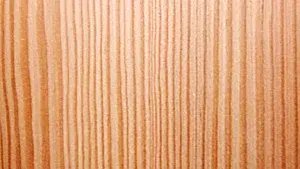


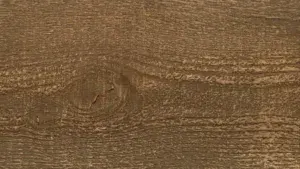

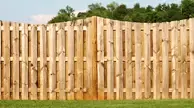





Leave your comment